For new readers: HERE are free links to my ebooks and best recent posts.
HERE is the Rumble link for this excellent interview.
Zaid’s work is required reading, so I reviewed how to search a substack’s archives for you at the end of the post.
Our collective backstory
Zaid
A few months ago, he wrote a comment to me about the dermatologists' promotion of sunscreen and their claim that sun exposure was damaging. I sent him the applicable section of Butchered by “Healthcare” and included it for you as an appendix to this post.
Yoho
I have been worried about my vision and have been reading about natural cures using sunlight. A Kaiser specialist said I had a “small wrinkle” on one of my retinas. He told me reassuringly, “You have a problem, but let me worry about it for you. I will see you once a year for follow-up.” I liked that.
But since I am a do-it-yourselfer, I have been using a couple of red light devices almost daily in hopes of improving my vision. I stumbled across Zaid’s work as I was researching this. Spoiler: a vast literature about red lights says it heals eyes, even for macular degeneration. Zaid said red light was helpful, but that sunlight was likely far more beneficial.
Then, a few days ago, I went to Costco to get new glasses. The big wholesaler has almost everything, but I knew they did not have what I really needed—new eyes. The optometrist had me peer into his machines, then said, “You have moderately severe dry macular degeneration.” I freaked out and went into research mode.
George
As I prepared for this chat by blasting through Zaid’s archives, I found that our friend George, whom you know from prior episodes, had commented on one of his posts:
Nov 20, 2023
After two tiring years of pandemic policy-induced stress, my eyesight noticeably deteriorated, and I finally decided to do some research. I had read about Bates over twenty years ago and more recently came across material from Esther Joy Wan der Werf. After speaking with her—and she spoke about the importance of natural light exposure every day—I ditched my glasses and sunglasses over a year ago. I've had a noticeable and measurable improvement in my eyesight since then.
The real problem is that I work in front of a computer most of the day, and I live in Canada, where we don't get much sunlight for half the year.
Although my eyesight has improved, my astigmatism still causes sub-par vision, especially at a distance. To compensate for reduced sunlight, I have actually purchased a Solarc UVB-NB light system, but they warn very sharply that you have to wear eye protection when using their device, which is basically Phillips UVB-Narrowband lights.
I also have a NIR light that I was using for muscular injuries. Although the maker suggests not looking directly into it, there are no warnings for eye protection. In fact, after a few days of use, I'm becoming a lot less sensitive to its brightness. It emits both 650nm and 850nm IR light.
I am trying to figure out how to continue to improve my eyesight, particularly the stubborn astigmatism.
My concerns are closely related—I am blind in one eye and cannot see out of the other. Since George is a better student than I am, I asked him to help with Zaid’s interview.
Are eyes like glass lenses?
The medical vision community, including optometrists and ophthalmologists, seems to view the eyes as a camera lens with little ability to adapt or heal. Bates Method trainers, such as my friend Esther Joy van der Werf, disagree. (The link goes to her recent interview.)
Zaid agrees. He says that if you do one thing as a result of what you hear today, go out at every sunrise and look directly at the sun for a few minutes. This “sungazing” regenerates your eyes. It resets your circadian rhythm and improves vision. He says that “grounding” your bare feet to concrete or soil at the same time helps the process. Esther said to sun gaze just for a few seconds at a time, and that it was safe even at midday, but Zaid said to be careful.
George and Zaid both thought that I would benefit from doing my computer work outside. From our conversation, I gathered that the injurious blue computer light would be insignificant if I was out of the house most of my workday.
Other things I learned:
The other half of this story concerns the need to avoid bright lights, especially blue light, at night. Zaid presents the case for using red lights after dark.
Full spectrum bulbs are far better than conventional ones. Blue LEDs are “blue on steroids” and are injurious.
The ideal bedroom is absolutely dark.
Eating after sunset is unhealthy and throws off circadian rhythms.
Red light exposures protect against the harmful blues and greens of artificial light. Most natural light is red, so getting sunlight daily is also protective.
Opening windows allows light to come in without being blocked by glass. This bounces around and mitigates the damage done by artificial lights.
Zaid does as much as he can outside, including his computer work. Even in the shade, this offers immense benefits because infrared light bounces off everything and radiates you with goodness.
Virtually all windows are tinted to cut out UV. The only eyeglasses I could buy at Costco had tinted lenses. Contact lenses have the same problem, and even my implanted cataract lenses have this same destructive “protection.” That cited reference says, “The UV light does not help or assist with vision; however, it does damage the retinal structures. A 10% cut-off of UV exposures ensures sufficient retinal protection, although we strongly recommend our patients to wear sunglasses for full protection.” All wrong, and Zaid calls them out HERE. He also recommends half-lenses if they work for you so you can look up into the sunlight.
Blue light is the only kind that passes through auto windshields. The side windows, however, allow more healthy light through.
Unplugging all appliances and lights in hotel rooms decreases the EMF and turns off their lights. Unplugging your Wi-Fi router at night is a good practice that reduces your exposure. Simply turning it off does not completely discontinue the signal.
HERE is where to buy clip-on amber red lights to use for reading after dark and other devices for your home.
Heliotherapy
Sun therapy was first done in the early 1900s, long before the antibiotic era. The below is from Zaid’s Substack article HERE.
Dr. Auguste Rollier (The “Sun Doctor”) developed heliotherapy for the treatment of tuberculosis. In 1903 he began practicing his ideas one valley over from Villars-sur-Ollon, at Leysin, Switzerland.
By 1927, Rollier offered “the most improved treatment of extra-pulmonary tuberculosis” in Western medicine. He oversaw 36 sanatoria in the Vaudois Alps, treating over 3,000 patients. His cure rate was exceptional, and he saved the limbs of many patients who were scheduled for amputation.
Sunbathing your baby is important! The 1931 US Department of Children guidelines pamphlet recommended this.
Other topics we spoke of
Depression and anxiety are successfully treated with sun exposure.
Microplastics are everywhere and toxic.
The virtues of spring water.
Spoiler #2
After my shocker at Costco Optometry, I went to see Jeffrey Luttrell, MD, a retinal specialist who developed a new noninvasive treatment to prevent and improve macular degeneration and other eye problems. He treated me with a painless laser beam for less than 5 minutes. I am reading his book and will post about him, and I hope to interview him soon. His website is VisionProtection.com.
References, ideas, and notes
Zaid said that his father’s death several years ago sparked his motivation to do more with his life. Before this, in his early 20s, he was a professional soccer player in Europe.
Z’s original motivation to write and speak was inspired by a Jack Kruse podcast HERE. I tried listening to it, but Jack has neurosurgeon syndrome. I have seen this before, but I do not think Zaid has. It is where a person is good at one thing, so they think they should be listened to about everything else. I thought Jack was pretentious and a poor communicator, and since the podcast lasted nearly three hours, I gave up after less than a third.
I did not ask anyone yet about evening TV watching for fear I would have to give up YouTube police shows.
I am 2.5 times Zaid’s age, but he has somehow already learned to write like a pro and acquired polish, perspective, and erudition. When I was his age, I was in medical training. I believed my calling was to irritate the hell out of everyone around me.
Appendix #1: Sun exposure suppression and dermatology’s sunscreen promotion
This is a bizarre dermatology psych-op that lined their pockets and damaged anyone who believed them. It started when a Madison Avenue marketing company told the Derm leaders to change their image from foolish pimple poppers to fierce cancer fighters.
Skin docs were soon charging millions a year for office cancer checks and pricey "skin surgeries" that could sometimes be performed with nail clippers. They developed the "standard" that every bit of skin removed must be inspected under the microscope and a substantial charge generated. They began using the same type of billing codes that surgical pathologists employ when examining systemic cancers. (Question: Which breed of doctor makes the most money? See * below.)
The truth about the sun was sacrificed to marketing lies. Contrary to what the dermoids** claim, sun exposure is profoundly healthy—if you have the minimal level of judgment required to avoid roasting yourself. Consider:
Women who are outside regularly have a far lower risk of breast cancer than those who avoid the sun.
Safe, regular sun exposure can eliminate or reduce depression.
We are told that melanoma incidence has multiplied even in this era of sunscreen and sun avoidance. But this is dishonest reporting; the proper measure, melanoma deaths, has remained the same.
The dermatologists use this lie to make us afraid of even walking outside. They recommend instead that we scurry into their offices clutching our hats and have "suspicious lesions" clipped off at great expense.
Cancers, heart disease, autoimmune diseases, the flu, Parkinson's, multiple sclerosis, and infertility are reduced by sun exposure.
Sun exposure increases the likelihood of a healthy pregnancy and baby.
Women who get sun have only one-eleventh the risk of a hip fracture as those who do not.
Sun avoidance and using sunscreen might be as hazardous as smoking.
See The Sunlight Institute website for references and more.
*Answer: A few dermatologic pathologists have gross billings of $40 million annually.
** A dermoid is a cyst filled with stinky dead skin; it is also my pet name for dermatologists. I know about dermoids because I spent a year in one of their training programs. To my credit, they fired me, and you can read about it in Butchered by "Healthcare."
The Skin Cancer Charade from Butchered by “Healthcare”
I once tried to become a dermatologist. These specialists stay cleverly in their own world, avoid dealing with serious problems, and make a lot of money without losing sleep. It seemed like a masterful concept. I was an annoying young man, but through family connections and somehow conjuring a fragile veneer of charm, I got accepted into one of their most selective training programs. I thought this feat qualified me for the dermatologic lifestyle and wanted to spend my weekends hiking the Appalachian Trail. My mentors, however, thought I should spend 70 hours a week learning about skin diseases. After a year, they exposed me as a poseur and kicked me out.
I viewed it as a personal failure, but the whole time, I smelled something fishy. I was too close to see clearly, and I had plenty of problems, so I could not put my finger on it. Like the dermatologists who were unsuccessfully trying to train me, I did not know the history.
The modern era for skin doctors started in the 1980s when the American Academy of Dermatology hatched a plan to contrive an epidemic of dangerous skin cancers. A Madison Avenue public relations firm charged them two million dollars to come up with the idea. The proposal was for them to disease-monger themselves from foolish pimple poppers into fierce cancer fighters. After this, they evangelized about patients coming to their offices to get a complete skin examination. This would supposedly prevent a plague of skin cancers. The USPSTF later exposed this idea as worthless and said the screening frenzy was cultivating lucrative skin surgery rather than preventing cancer.
One ploy involved proclaiming the skin bumps they call actinic keratoses or AKs precancerous (dermatologists love names and acronyms). Many seniors have dozens, if not hundreds, of these. Since then, armies of skin doctors have been billing Medicare for treating millions of AKs with liquid nitrogen devices resembling tiny blow torches. Studies show that over half of all these bumps disappear on their own. Only one percent change to skin cancer after a year and four percent after four years, and these are virtually all slow-growing and easily treatable.
At about the same time, to handle this pandemic, dermatologists dreamed up the most expensive skin procedure ever seen, “Mohs” surgery. Many of these specialists bill Medicare hundreds of thousands of dollars a year for this alone. I have an acquaintance who does ten of these cases every Friday and gets paid about $15,000 each.
Patients spend up to a full day sitting around an accredited surgicenter operating room while dermatologists remove slices of their tumor bit by bit. They examine each morsel under the microscope as it comes off. A bill is submitted for each cut. There is another for processing each bit into a slide and yet another for each look into the microscope. This goes on until they have removed all diseased tissue.
After this, the area is “reconstructed.” This involves a lot of sewing, sometimes in areas as small as a dime. Insurance pays more if this is performed on a separate day, so the patient often gets sent home with a hole in their face. Sometimes the patients get referred to plastic surgeons, who may use surgical center charges and other tricks to make even more money. In return, the plastics try to dig up skin cancer cases to send to dermatologists for Mohs treatment. These get bounced back to them for reconstruction.
At first, dermatologists did Mohs only for selected patients using careful criteria. Some areas of the body are critical for function and appearance, and their preservation can be essential. For example, this procedure produces excellent results for skin cancers of the nose and corners of the eyes. Other tumors have an octopus-like spread with indistinct borders. Here, Mohs is used to remove just the tumor with as little normal tissue as possible. These issues have all been worked out by dermatologists and published in their journals.
The older methods involved scratching, burning, or cutting away skin cancers. The holes were often left to heal without stitches, and we would then follow the patient for recurrence. With the use of a greasy antibiotic ointment a few times a day, normal healing regenerates the skin within a few weeks. The results are typically reasonable, even on the face.
Although this is adequate for the vast majority of skin cancers, dermatologists now perform Mohs indiscriminately. Robert Stern, a Harvard dermatologist, said, “The decision to utilize [Mohs] is likely to reflect the economic advantage to the provider rather than a substantial clinical advantage for the patient.” He reported wide variations in usage by the practice and region and estimated that the costs of Mohs surgery in the US were $2 billion in 2012. A panel charged with developing reimbursement criteria produced vague guidelines that are used to justify almost anything. The experts who were making money made the rule—that they could do nearly anything they wanted.
Mohs is primarily used to remove basal cell or squamous cell skin cancers, which rarely leapfrog to other areas of the body. It is not appropriate for melanomas, which surgeons remove along with a sizable chunk of surrounding tissue to prevent these metastases. Mohs's primary advantage is that it reduces the chances of having to perform a second procedure for local recurrence. It also allows the surgeon to leave as much healthy tissue as possible.
The older, much less expensive method is to have the patient return a few months after cutting the skin cancer out to ensure there was no regrowth. If no further work is necessary, this follow-up check takes only a few moments. Subsequent removal procedures are usually easy.
Mohs surgeries are medically minor procedures that require only local anesthesia. However, the fees are often higher than those for complex, lengthy, and hazardous general surgeries. Dermatologists spend money on lobbyists, who do their job defending exorbitant reimbursement for skin procedures.
Melanoma is the only skin cancer that routinely metastasizes and kills people. The dermatologists almost universally refer these cases to plastic surgeons for removal and then to oncologists for chemotherapy. Few skin doctors want to get involved with a fatal disease.
But when the dermatologists became cancer slayers, they began crying about the exploding numbers of melanomas along with the other skin tumors. As a result, they discovered so many that they made the claim that melanomas were increasing faster than any other cancer. This epidemic now seems to be at the point of. one who dares to walk outside in slaughtering any sunlight.
Left unsaid was that small, early tumors require only a simple procedure rather than an overpriced, supposedly complicated plastic surgery. Treating low-grade (thin) melanomas in seniors does not prolong their lives, either. However, once discovered, since progression into a fatal disease is unpredictable, they are cut off.
Because of all this, far more melanomas are being identified, but the total deaths are not increasing. Like thyroid and kidney cancer, the disease-specific mortality for melanoma has not gone up one iota. All the extra procedures to chase them, however, cost us time, pain, money, and anxiety.
The top line on the graph below shows the number of melanoma cancers found. The lower line shows the number of deaths, which is unchanged (National Cancer Institute).
A generous observer might say that the above analysis has not entered the dermatologic consciousness and that there are no wrongdoings here. But the specialty’s ringleaders understand it—they orchestrated the entire thing. And they made the story terrifying through disease-mongering.
People over 85 years old get twenty percent of all Mohs surgery. Many are performed in the last year of life and even in the last weeks before death. Demented people in nursing homes get frozen, biopsied, and operated on. These procedures hurt.
The skin doctors even got approval for a code to bill insurance for pimple-popping or “acne surgery.” During my training, when I reached a certain stage, they slapped the specially designed pimple extractor into my hand. I felt like a general surgery resident who was finally being given the scalpel to do my first appendectomy1.
1 Much of this material came from dermatologist David Epstein’s online blog and a 2017 NY Times exposé of dermatology by Katie Hafner and Griffin Palmer.
Appendix 2: accessing Zaid’s substack’s archives
Go to his main page (URL above). Find the Q in the upper right and type in your search term. I suggest you start with “microplastics” or “heliotherapy.” You can also use the “Archive” pull-down menu at the top middle to look at the entire thing.
Appendix #3
We are selling a lot of commercial chlorine dioxide products these days, so I get a lot of these:
Frontier Pharmaceutical, Inc.
Hello Robert,
Congratulations! We are happy to inform you that your referral $ 25.47 is now approved.
In the commission tab of your affiliate account, you will see the status of that referral has been changed to "approved." Another notification email will be sent to you once the payment is processed.
Keep up your great work. We are excited about our journey ahead!
Warm regards,
I give this $$ away.
I just interviewed “Curious Outsider,” the filmmaker who gave us The Universal Antidote movie. This movie convinced me that chlorine dioxide is critically important. Click the link to watch it, or review the whole subject in my original post HERE.

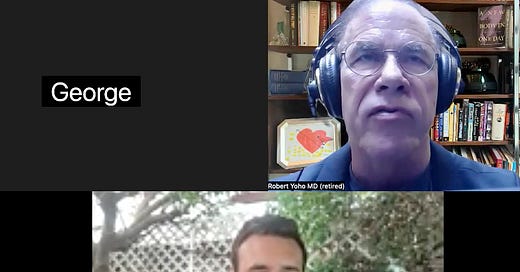



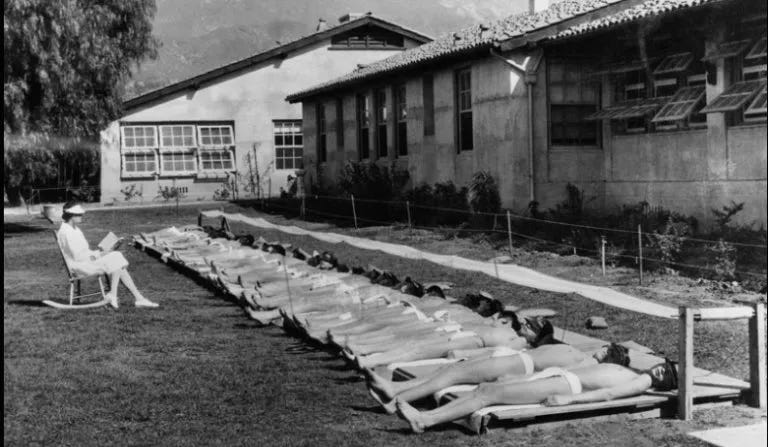
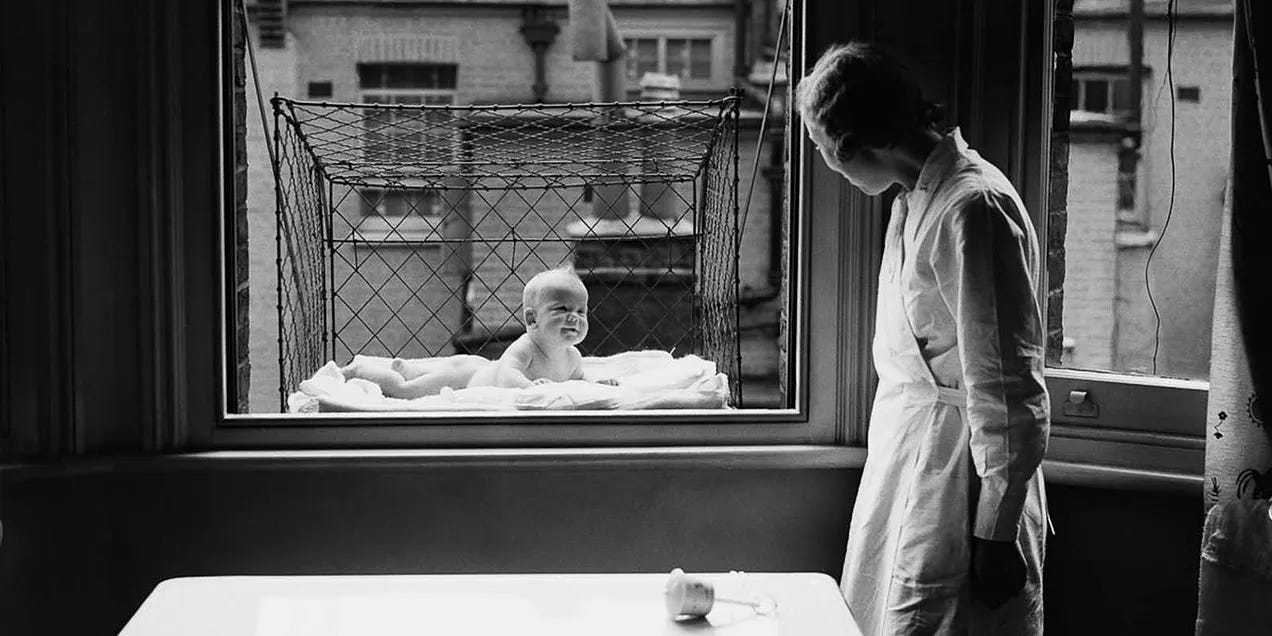
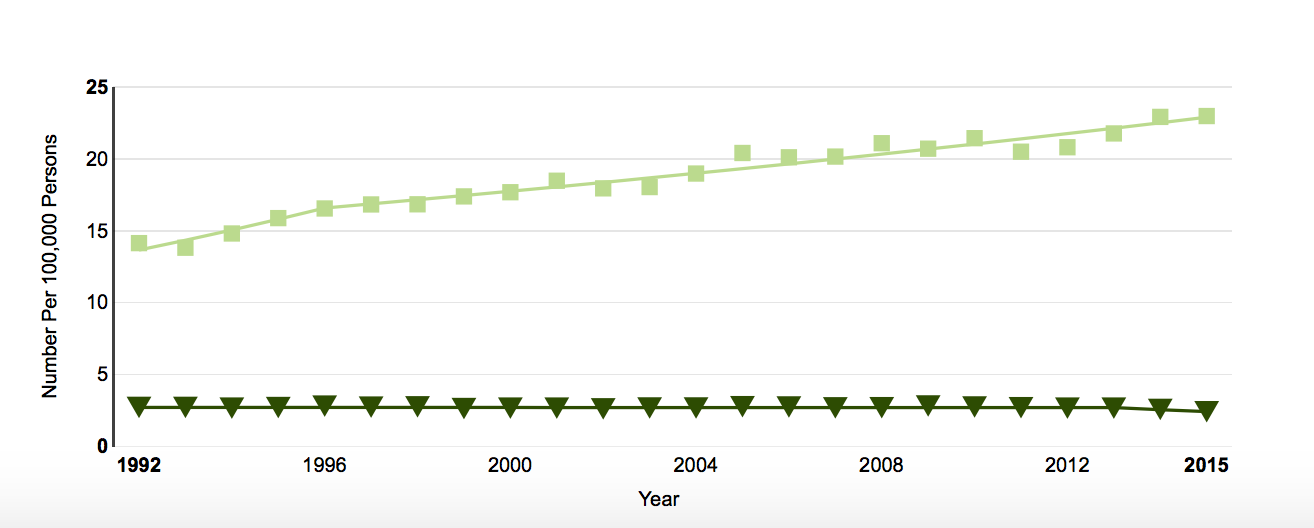
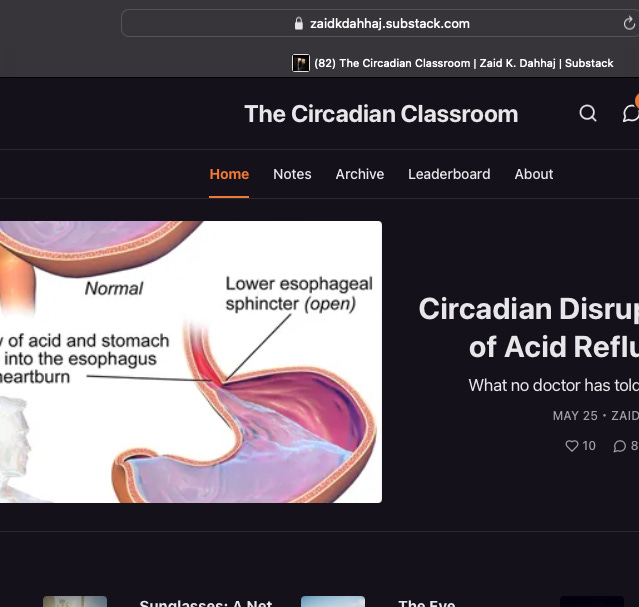







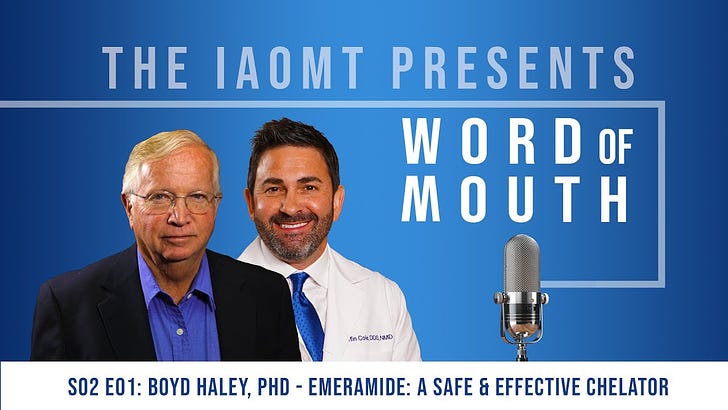

Share this post